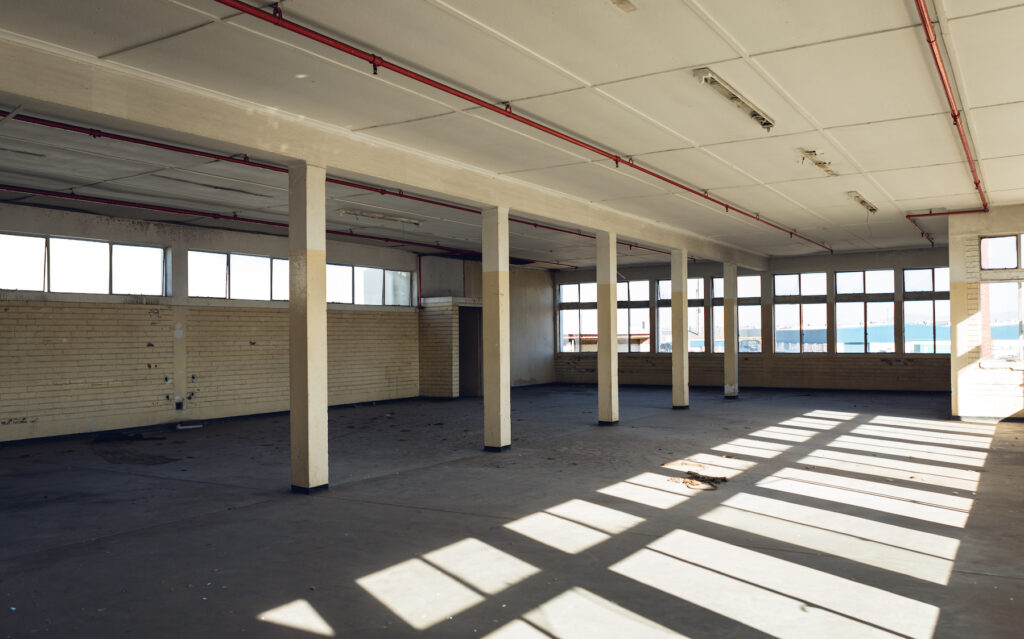Negotiating your first commercial lease as a home stager can be a daunting process. Finding the right space to store and receive inventory is crucial to the success of your business, but navigating the complexities of commercial leases can be challenging, especially if you’re new to the world of commercial real estate. However, with the right tips and strategies, you can negotiate a lease that works for your business and sets you up for long-term success. In this blog post, we’ll explore some key considerations and strategies for negotiating your first commercial lease as a home stager, so you can find the right space for your business and start growing your inventory.
Negotiating Your First Commercial Lease & What to Consider Before Signing:
1. Determine your budget:
Determine how much you can afford to pay for rent, utilities, and other expenses related to your commercial lease. Make sure you have a realistic understanding of the costs associated with leasing commercial space before you start looking.
2. Consider the location:
When choosing a location for your home staging business, consider the proximity to potential clients, as well as the accessibility of the space for both clients and employees. Additionally, look into the zoning requirements and regulations that may impact your business.
3. Evaluate the space:
Before signing a lease, carefully evaluate the commercial space to ensure it meets your business needs. Consider factors such as square footage, layout, and amenities.
- Ceiling height:
Look for a warehouse with high ceilings to accommodate tall furniture pieces and maximize storage space. - Floor load capacity:
Ensure that the warehouse has a strong enough floor to support the weight of heavy furniture items. - Loading docks:
Look for a warehouse with loading docks that can accommodate large delivery trucks and make loading and unloading furniture easier. - Layout:
Consider the layout of the warehouse and whether it can be configured to optimize storage space for furniture items.
- Wide doors:
Choose a warehouse with wide doors that can accommodate furniture items of all sizes. - Lighting:
Make sure the warehouse has adequate lighting to ensure safe and efficient movement of furniture items. - Temperature control:
Consider whether temperature control is necessary to protect furniture items from temperature and humidity fluctuations. - Security:
Look for a warehouse with a security system in place to protect your valuable furniture inventory.
When I asked one of the GOATS of home staging, Michelle Minch, Founder of Moving Mountain Designs based out of Southern California what her biggest regret was when she leased her first commercial space she shared:
“I wish my first warehouse had ceilings higher than 16’. 20’ is ideal if you want to be able to double your floorspace and build a mezzanine. Other than paying for the mezzanine to be built, that’s free floorspace. Make sure to check local building and fire codes before you make the investment to build.”

4. Understand the terms + NEGOTIATING your first lease:
Make sure you understand the terms of the lease agreement, including the length of the lease, rent increases, and any other restrictions or requirements. Be prepared to negotiate terms that are favorable to your business.
- Do your research:
Before entering into negotiations, research comparable commercial properties in the area to understand what the market rates are for similar properties. This information will give you an idea of what is reasonable to ask for. - Be prepared:
Develop a clear understanding of what you want from the lease and what you are willing to compromise on. Bring a list of the terms you want to negotiate to the table and be ready to discuss them in detail. - Build a positive relationship:
Building a positive relationship with the landlord or leasing agent can help you negotiate better terms. Be respectful, honest, and straightforward in your communications.
- Negotiate multiple terms:
Don’t just focus on rent; consider negotiating other terms of the lease, such as the length of the lease, renewal options, maintenance responsibilities, and improvements to the property. - Consider incentives:
Ask about any incentives the landlord may be willing to offer, such as free rent, waived security deposits, or tenant improvement allowance(s). - Get it in writing:
Ensure that any agreements you reach during negotiations are put in writing and included in the lease agreement.
A strategy should include looking at spaces that are owned by individuals or families, Michelle Minch shares, “negotiating with mom and pop landlords rather than commercial partnership or conglomerates is much easier.”
The Different Types of Commercial Leases:
-
Gross lease: In a gross lease, the tenant pays a fixed monthly rent that includes all of the property’s operating expenses, such as taxes, insurance, maintenance, and utilities.
-
Net lease: In a net lease, the tenant pays a lower base rent, but is also responsible for paying some or all of the property’s operating expenses in addition to the rent. There are several types of net leases, including single net, double net, and triple net leases, which determine which operating expenses the tenant is responsible for paying.
-
Percentage lease: A percentage lease is often used in retail settings, where the tenant pays a base rent plus a percentage of their sales as rent. This type of lease is often used when the tenant expects to make a lot of sales, and the landlord wants to share in the tenant’s success.
-
Ground lease: A ground lease is a long-term lease of land only, and the tenant is typically responsible for constructing any buildings or structures on the leased land.
-
Sublease: A sublease is a lease in which a tenant leases out part or all of the space they are renting from the landlord to another tenant.
-
Short-term lease: A short-term lease is a lease with a duration of less than a year. Short-term leases are often used for temporary spaces or for tenants who are testing a new market or location.
The specific terms and conditions of each commercial lease can vary depending on the needs of the landlord and the tenant, and it’s important to carefully review and negotiate the lease agreement to ensure that it meets the needs of both parties.
5. Plan for growth:
When choosing a commercial space, think about your long-term business goals and consider whether the space will be able to accommodate your needs as your business grows.
Remember that finding the right commercial space for your home staging business can take time and effort, but careful planning and research can help you secure a lease that is both affordable and conducive to your business’s success.
6.Seek professional advice:
Consider seeking advice from a real estate agent, lawyer, or other professional who can assist you in finding and negotiating a commercial lease. This can help ensure that you are getting a fair deal and that your lease agreement protects your business interests.
How to know when it’s time to upgrade to a commercial space?
Michelle Minch shared how she knew it was time for a commercial space,
“I wanted to get out from under having an outside entity dictate my profitability (furniture rental companies). Also, I found that a warehouse increased our efficiency 10 fold. You make money in staging not only by the prices you charge but by how efficient you can be.”
Not ready for a commercial lease?
Self-storage units are a flexible and cost-effective option for storing inventory. They come in a range of sizes and can be rented on a monthly basis, making them a good choice for short-term storage needs. Be sure to choose a unit with climate control and security features to protect your inventory.
- How to Grow a Profitable Home Staging Business | Ashley Provost’s CEO Mindset Shift - February 9, 2025
- Health Benefits for Staging Companies to Attract Top Talent: RESA®’s Game-Changing Solution - October 28, 2024
- Catherine Waldeck’s Journey with Pure Lux Staging & Design - September 26, 2024


